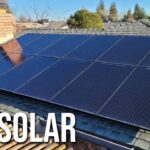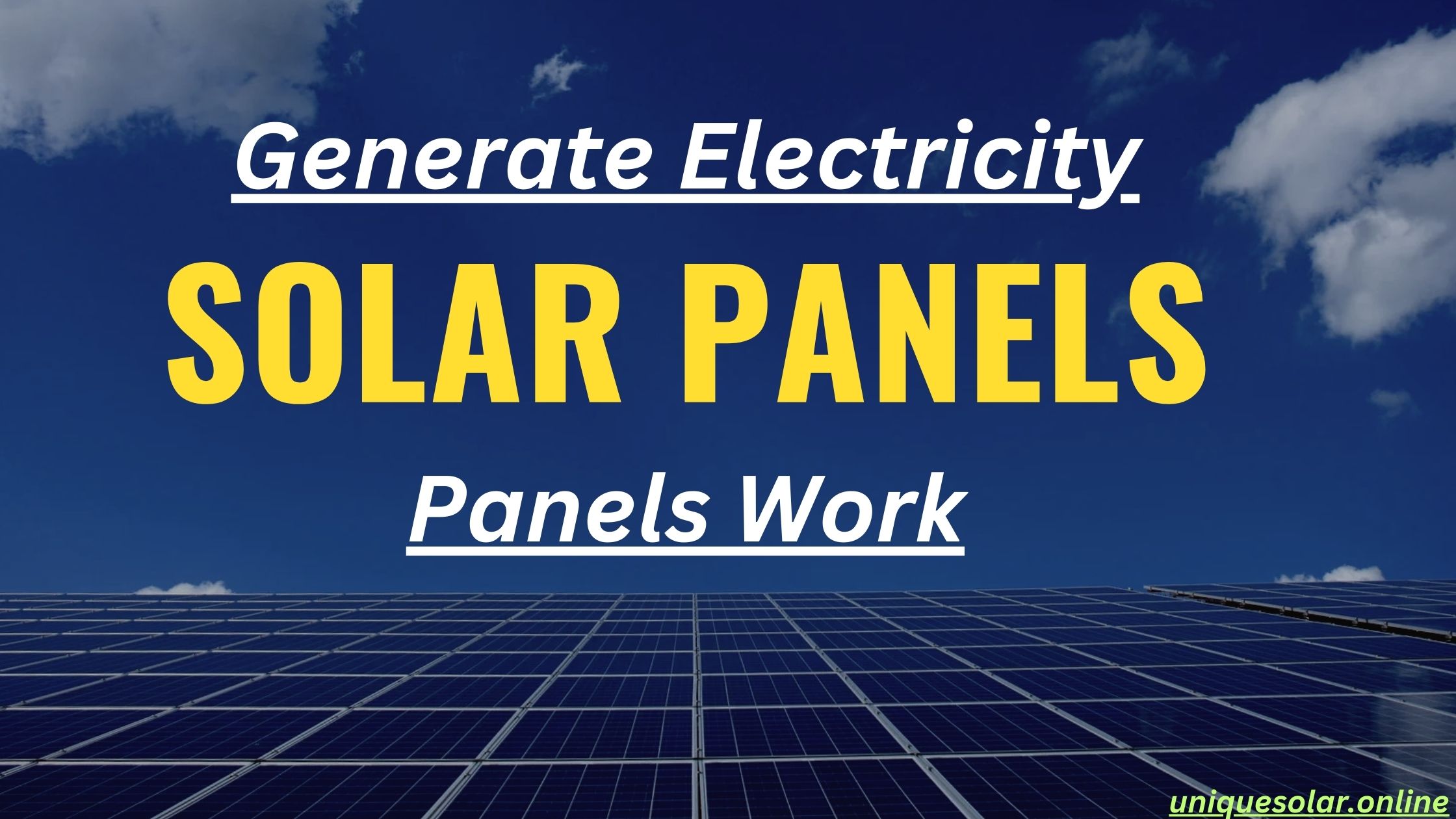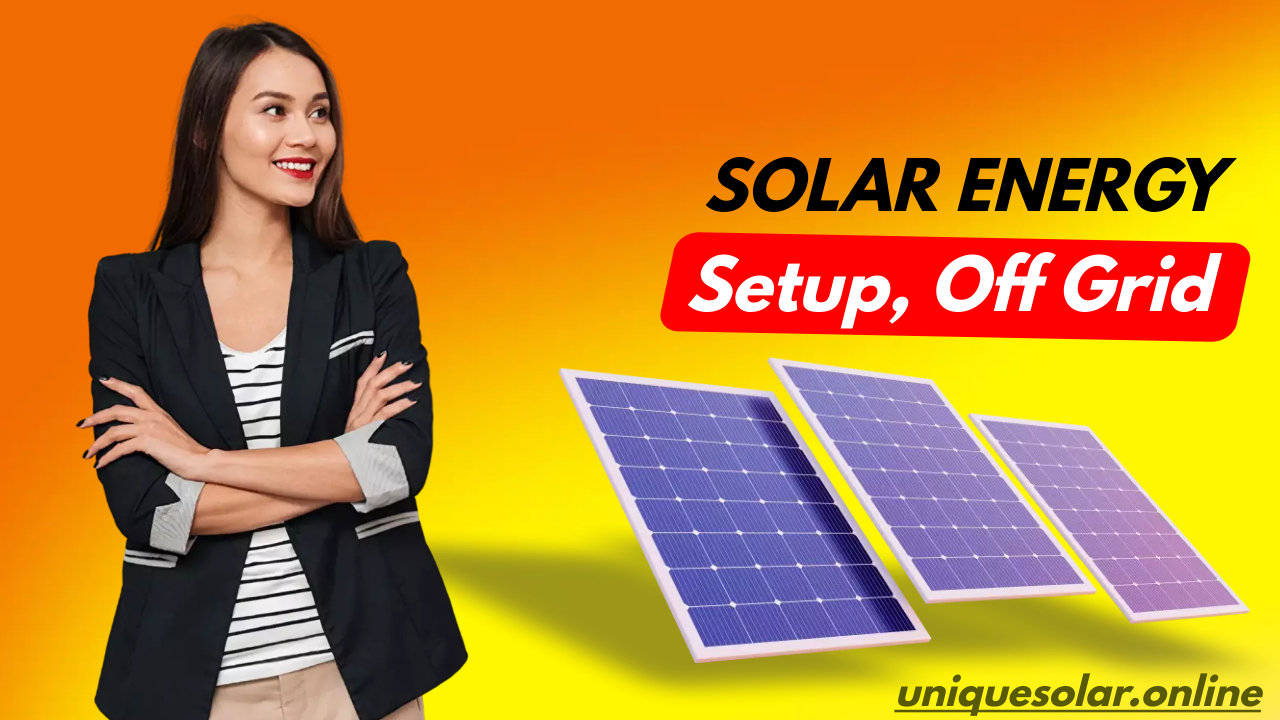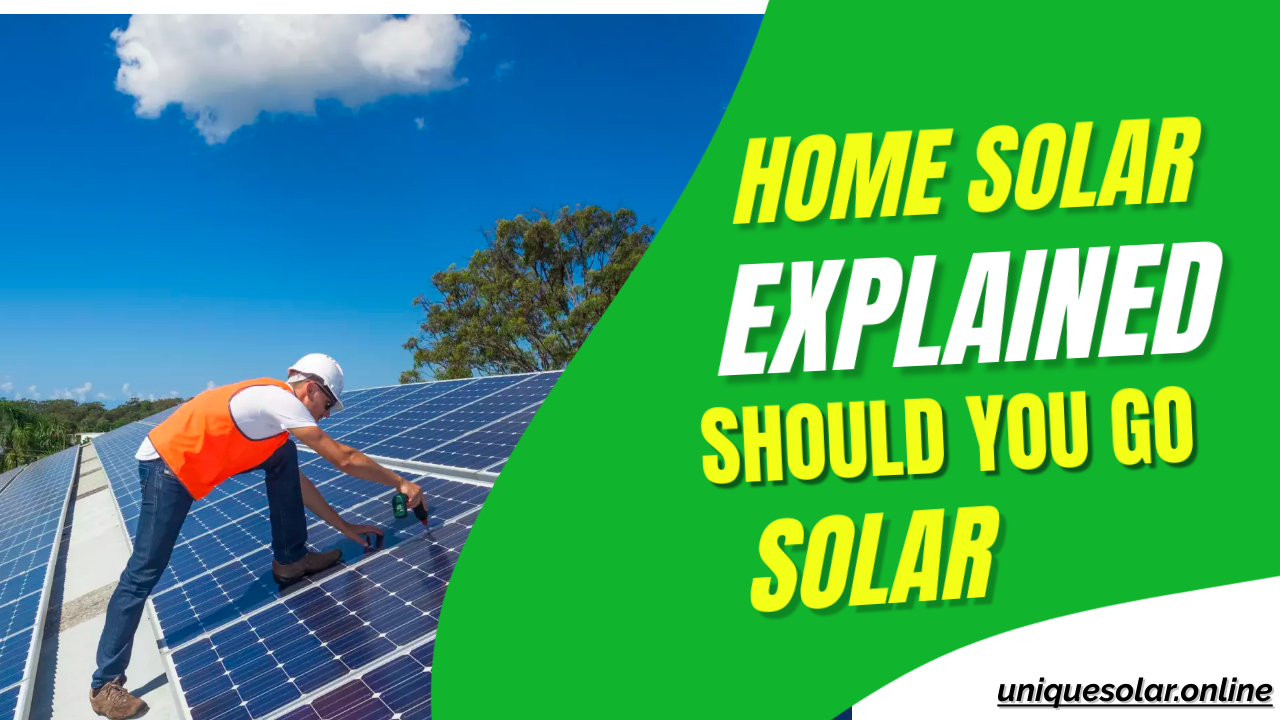We have a world population expected to grow by 1.2 billion people within 15 years, coupled with a growing demand for meat, eggs, and dairy, which soak up over 70% of fresh water for crops, plus electricity demand that’s growing even faster than population growth … what are we supposed to do about all of that? Well, we can combine two of my favorite things: technology and food. Both of which I’ve been accused of having too much of. But, could combining solar panels plus farming be a viable solution to all of those problems? Let’s take a closer look at electrifying our crops … not literally electrifying crops … never mind … let’s take a closer look at adding solar to our farm land as well as some of the side benefits … and challenges … it creates.
Introducing Agrivoltaics and Its Challenges

I’m Matt Ferrell … welcome to Undecided. Challenges. The problem with solar panels is that they need a lot of space to generate serious amounts of electricity. Agrivoltaics or APV for short, combines agriculture with electricity generation by farming under a canopy of solar panels … and there’s some really interesting recent examples that make a compelling case for it, but before getting into that it’s a good idea to understand the challenges around solar parks in general and some of the solutions that have been developed.
The Limitations of Traditional Solar Parks
Solar parks in rural areas have been around for almost two decades. The major problem with this type of solar installation is that the ground beneath the panels can’t be used, mainly due to the small spaces between the rows of panels which aren’t large enough for modern farming equipment to pass through. It is possible to convert a typical solar park into dual land use when it’s designated as a living area for grazing by small livestock like chicken, geese, and sheep, as well as for beekeeping.
These animals are beneficial to solar farms because they reduce the cost of maintaining vegetation growth and don’t introduce any risk to the panels themselves. The same can’t be said of something a bit larger like pigs, goats, horses, or cattle … it’s a known fact that cattle hate solar panels.
Exploring Vertical and Bifacial Solar Panel Options
When more space is allowed in between the solar panel rows, crops can be grown there. However, the space beneath the panels still isn’t usable and needs to be maintained. This is considered alternating land use instead of dual land use because there are areas of the land that are one or the other … not both solar and crops at the same time. The land between the rows will be shaded during some hours of the day, meaning you’re altering the characteristics of the land and the types of crops that can be grown. So what if we started to go vertical with our solar panels? That’s where we start to get some interesting alternatives to standard ground-mounted solar park style installations.
Benefits of Vertically Mounted Bifacial Modules
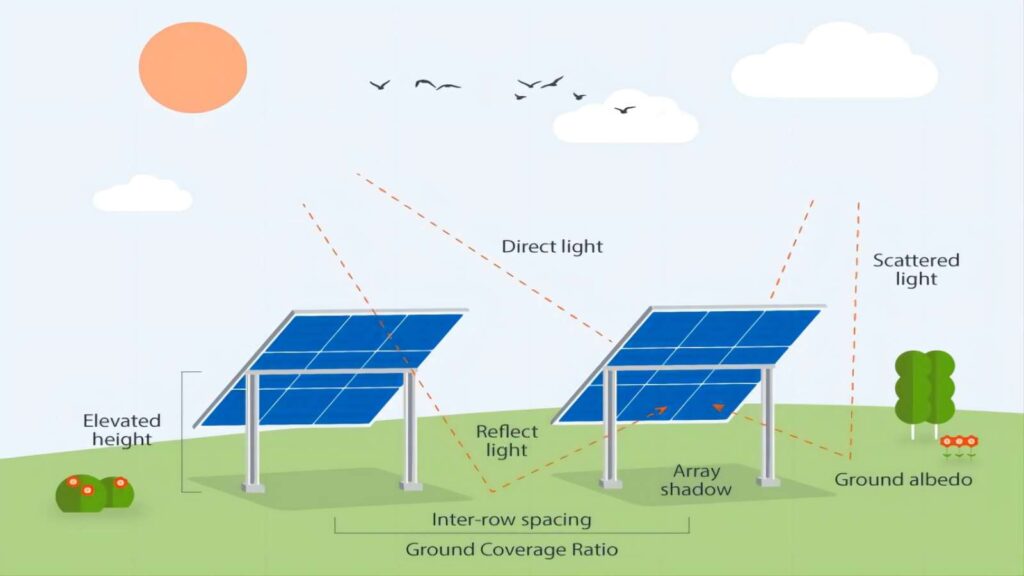
Using vertically mounted bifacial modules allows for more arable land. And if you don’t know what bifacial solar panels are, they can collect solar energy from both sides of the panel. This type of installation would work particularly well in areas that suffer from wind erosion, since the structures reduce wind speeds which can help protect the land and crops grown there. The bifacial panels also can generate more power per square meter than traditional single-faced panels and don’t require any moving parts. Then there’s also the option of mounting panels on stilts, which allows farming machinery to pass underneath. In this design, you have to maintain a certain clearance between rows to protect the stilts from the machinery, so there is a modest arable land surface loss … usually 3-10%.
Advanced Solar Panel Mounting Techniques
Many variations on this theme are currently under active research. Instead of fixed panel mounting, panels can be mounted with actuators, allowing the panels to tilt in one or two directions, which allows for both solar energy and plant growth optimization. This can be particularly important during the initial stages of growth for some crops. But what about growing crops … UNDER … the elevated panels? You’d think that solar panels casting shade on plants would be a bad thing, but the way photosynthesis works makes things interesting. Plants grow their mass out of CO2 with the help of sunlight. They literally are growing from the air … BUT … not all available sunlight can be converted into biomass. After a certain threshold, which is called the light saturation point, plants can’t absorb any more energy, so they need to get rid of that excess energy by evaporating water.
The Potential of Agrivoltaics in Different Climates

If we oversimplify this, we can divide the plants into two groups: “I’ll have my light supersized” plants and “can I order my light off the kids menu” plants. That group, the so-called shade plants, are particularly useful in combination with solar panels, since the panels obviously block some of the available sunlight. Now sun plants are sometimes referred to as shade-intolerant plants, which makes them sound like jerks. This is a slight misnomer, since these plants just require more sunlight than shade plants but can also suffer from too much sunlight. When any plant reaches their threshold, they can suffer from ‘sunburn’ and heat stress, just like me, causing increased amounts of water evaporation … just like me.
Case Studies and Success Stories in Agrivoltaics
According to a report from the German Fraunhofer Institute for Solar Energy, nearly all crops can be cultivated under solar panels, but there may be some yield loss during the less sunny seasons for sun-hungry plants. In the RESOLA project conducted between 2016 and 2018 in the German area of Lake Constance or the Bodensee as the Germans call it, they demonstrated that during a relatively ‘wet and cold’ year in 2016 APV-crop yields were 25% less than the non-solar reference field, but in the ‘dry and hot’ years of 2017 and 2018 the APV-crops yields exceeded the reference field. That’s a sign that APV could be a game-changer in hot and arid regions. The amount of experience with agrivoltaics is still fairly limited and the big successes have been mainly with shade-tolerant crops like lettuce, spinach, potatoes, and tomatoes. Which leads us to some of the super promising examples that make a compelling case for agrivoltaics.
The Netherlands’ Agrivoltaics Projects
- But before I get to that, I want to give a quick shout-out to today’s sponsor … me!
- Seriously though, be sure to check out my follow-up podcast based on your feedback and comments on these videos, Still To Be Determined, which you can find on all the major podcast services out there or at stilltbd.fm, as well as a video version here on YouTube.
- I’ll put all the links in the description.
- It’s a fun way to continue the discussion on these topics.
- Let’s switch over to The Netherlands.
- Tiny as it is, it is the second largest exporter of food in the world!
- The company “GroenLeven”, a subsidiary of the BayWa group, which is headquartered in Munich Germany, has started several pilot projects with local fruit farmers.
- Their largest site is in the village of Babberich in the east of the Netherlands, close to the German border, at a large 4-hectare raspberry farm, which is about 10 acres for those of us not on metric.
Benefits and Outcomes of Dutch Agrivoltaics
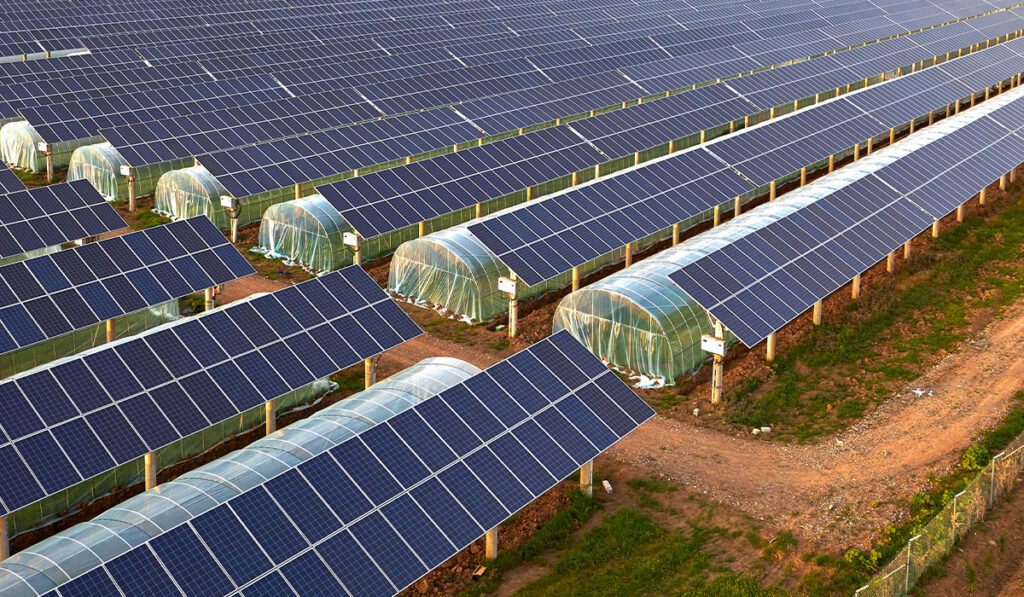
They’ve converted 3 hectares into a 2 MW agrivoltaics farm. The remaining part was left in a traditional farming setup. Raspberries are a fragile, shade-tolerant fruit that’s typically grown in rows covered with plastic to help protect them from the elements and ensure high yields. In this project, the raspberry plants are grown directly under the solar panels, which have been placed in alternating rows facing east and west. This maximizes solar yield, but also protects the plants from the prevailing winds. They did test traditional solar panels in this project, but they took away too much of the available sunlight, so they switched to panels with larger spacing between the solar cells to let more light through. The amount and quality of the fruit produced under the panels were the same or better as the fruit produced under the traditional plastic tunnels.
Overcoming Weather Challenges with Agrivoltaics
| Benefit | Explanation |
|---|---|
| Work saved from managing plastic tunnels | One big benefit for the farmer was the amount of work saved from managing the plastic tunnels, which are easily damaged by hail and summer storms. |
| Unsellable fruits from damage | In those cases, fruits may become unsellable from the damage, but they still have to be harvested anyway. |
| No damage under panels during summer storms | During the last summer storms, the fruits under the panels didn’t sustain any damage, while the harvest from the reference field was destroyed. |
| Cooler temperature under solar panels | Another major difference between the agrivoltaic test field and reference field: the temperature was several degrees cooler under the solar panels. |
| Pleasant for farm workers | Not only is it more pleasant for the farm workers, but it also reduced the amount of irrigation water by 50% compared to the reference field. |
| Crops keeping panels cool | Even cooler is how the crops affect the solar panels. The crops and their limited water evaporation actually keep the panels cool. |
| Solar panels’ efficiency | Solar panels actually don’t like to be hot, since it reduces their energy efficiency; the cooler a panel can be, the more energy it will provide. |
The Promise and Obstacles of Agrivoltaics
So just based on that, agrivoltaics appears to be a winning strategy. If we were to convert even a fraction of our current agricultural land use into agrivoltaics, a large portion of our energy needs can be met … easily. And with the added benefits in reduced water consumption, agrivoltaics can also be a game-changer in hot and arid regions of the world. So what’s keeping us from rolling out this dual-purpose, game-changing system at

